Amino Acid-Based Natural Deep Eutectic Solvents for Extraction of Phenolic Compounds from Aqueous Environments
Abstract
:1. Introduction
2. Materials and Methods
2.1. Chemicals and Materials
2.2. Preparation of Amino Acid-Based Natural Deep Eutectic Solvents
2.3. Extraction-Cycle Procedure
2.3.1. Preparation of Simulated Wastewater
2.3.2. Extraction Process
2.4. Analytical Methods
2.5. Calculation of Phenol Extraction Rate
3. Results and Discussion
3.1. Preparation of Natural Deep Eutectic Solvents
3.2. Properties of Natural Deep Eutectic Solvents
3.2.1. Thermostability
3.2.2. FT-IR and 1H NMR Analysis
3.2.3. pH
3.2.4. Stability in the Presence of Water
3.3. Phenol Extraction with Natural Deep Eutectic Solvents
3.3.1. Standard Curve of Absorbance–Concentration
3.3.2. Effect of Precursor Molar Ratio on Phenol Extraction
3.3.3. Effect of Phenol Concentration on Phenol Extraction
3.3.4. Effect of Reaction Time on Phenol Extraction
3.3.5. Effect of Temperature on Phenol Extraction
3.3.6. Study on Recyclability of Natural Deep Eutectic Solvents
4. Conclusions
Author Contributions
Funding
Institutional Review Board Statement
Informed Consent Statement
Data Availability Statement
Acknowledgments
Conflicts of Interest
Abbreviations
References
- Sas, O.G.; Domínguez, I.; González, B. Liquid-liquid extraction of phenolic compounds from water using ionic liquids: Literature review and new experimental data using [C2mim]FSI. J. Environ. Manag. 2018, 228, 475–482. [Google Scholar] [CrossRef]
- Sas, O.G.; Sánchez, P.B.; González, B. Removal of phenolic pollutants from wastewater streams using ionic liquids. Sep. Purif. Technol. 2019, 236, 116310. [Google Scholar] [CrossRef]
- Wang, Y.; Wang, X.; Li, H. Treatment of high salinity phenol-laden wastewater using a sequencing batch reactor containing halophilic bacterial community. Int. Biodeterior. Biodegrad. 2014, 93, 138–144. [Google Scholar] [CrossRef]
- Raza, W.; Lee, J.; Raza, N. Removal of phenolic compounds from industrial waste water based on membrane-based technologies. J. Ind. Eng. Chem. 2019, 71, 1–18. [Google Scholar] [CrossRef]
- Tri NL, M.; Thang, P.Q.; Tan, L.V.; Tahtamouni, T.M.A. Removal of phenolic compounds from wastewaters by using synthesized Fe-nano zeolite. J. Water Process. Eng. 2020, 33, 101070. [Google Scholar] [CrossRef]
- Alshabib, M.; Onaizi, S.A. A review on phenolic wastewater remediation using homogeneous and heterogeneous enzymatic processes: Current status and potential challenges. Sep. Purif. Technol. 2019, 219, 186–207. [Google Scholar] [CrossRef]
- Rispail, N.; Morris, P.; Webb, K.J. Phenolic compounds extraction and analysis. In Lotus Japonicus Handbook; Márquez, A.J., Ed.; Springer: Amsterdam, The Netherlands, 2005; pp. 349–354. [Google Scholar]
- Caadas, R.; González-Miquel, M.; González, E.J. Overview of neoteric solvents as extractants in food industry: A focus on phenolic compounds separation from liquid streams. Food Res. Int. 2020, 136, 109558. [Google Scholar] [CrossRef]
- Gonzalez, E.J.; Díaz, I.; Gonzalez-Miquel, M. On the behavior of imidazolium versus pyrrolidinium ionic liquids as extractants of phenolic compounds from water: Experimental and computational analysis. Sep. Purif. Technol. 2018, 201, 214–222. [Google Scholar] [CrossRef]
- Ni, H.; Dong, J.; Shi, J. Ionic liquid as extraction agent for detection of volatile phenols in wastewater and its regeneration. J. Sep. Sci. 2015, 33, 1356–1359. [Google Scholar] [CrossRef] [PubMed]
- Sulaiman, R.; Adeyemi, I.; Abraham, S.R. Liquid-liquid extraction of chlorophenols from wastewater using hydrophobic ionic liquids. J. Mol. Liq. 2019, 294, 111680. [Google Scholar] [CrossRef]
- Chen, Y.; Liang, H.; Qin, X. Cheap and biodegradable amino acid-based deep eutectic solvents for radioactive iodine capture via halogen bonds. J. Mol. Liq. 2020, 303, 112615. [Google Scholar] [CrossRef]
- Maneffa, A.J.; Harrison, A.B.; Radford, S.J. Deep eutectic solvents based on natural ascorbic acid analogues and choline chloride. ChemistryOpen 2020, 9, 559–567. [Google Scholar] [CrossRef] [PubMed]
- Lakshmi, A.B.; Balasubramanian, A.; Venkatesan, S. Extraction of phenol and chlorophenols using ionic liquid [Bmim]+[BF4]− dissolved in tributyl phosphate. CLEAN Soil Air Water. 2013, 41, 349–355. [Google Scholar] [CrossRef]
- Dai, Y.; van Spronsen, J.; Witkamp, G.J. Natural deep eutectic solvents as new potential media for green technology. Anal. Chim. Acta 2013, 766, 61–68. [Google Scholar] [CrossRef] [PubMed]
- Abbott, A.P.; Capper, G.; Davies, D.L. Novel solvent properties of choline chloride/urea mixtures. Chem. Commun. 2003, 9, 70–71. [Google Scholar] [CrossRef] [Green Version]
- Hashemi, B.; Zohrabi, P.; Dehdashtian, S. Application of green solvents as sorbent modifiers in sorptive-based extraction techniques for extraction of environmental pollutants. TrAC Trends Anal. Chem. 2018, 109, 50–61. [Google Scholar] [CrossRef]
- Aroso, I.M.; Paiva, A.; Reis, R.L. Natural deep eutectic solvents from choline chloride and betaine—Physicochemical properties. J. Mol. Liq. 2017, 241, 654–661. [Google Scholar] [CrossRef]
- Płotka-Wasylka, J.; De la Guardia, M.; Andruch, V. Deep eutectic solvents vs. ionic liquids: Similarities and differences. Microchem. J. 2020, 159, 105539. [Google Scholar] [CrossRef]
- Florindo, C.; Romero, L.; Rintoul, I. From phase change materials to green solvents: Hydrophobic low viscous fatty acid-based deep eutectic solvents. ACS Sustain. Chem. Eng. 2018, 6, 3888–3895. [Google Scholar] [CrossRef]
- Liu, Y.; Friesen, J.B.; Mcalpine, J.B. Natural deep eutectic solvents: Properties, applications, and perspectives. J. Nat. Prod. 2018, 81, 679–690. [Google Scholar] [CrossRef]
- Li, X.; Row, K. Development of deep eutectic solvents applied in extraction and separation. J. Sep. Sci. 2016, 39, 3505–3520. [Google Scholar] [CrossRef]
- Zhao, R.; Pei, D.; Yu, P. Aqueous two-phase systems based on deep eutectic solvents and their application in green separation processes. J. Sep. Sci. 2020, 43, 348–359. [Google Scholar] [CrossRef] [PubMed]
- Khare, L.; Karve, T.; Jain, R. Menthol based hydrophobic deep eutectic solvent for extraction and purification of ergosterol using response surface methodology. Food Chem. 2021, 340, 127979. [Google Scholar] [CrossRef] [PubMed]
- Zhang, Z.; Kang, N.; Wang, J. Synthesis and application of amino acid ionic liquid-based deep eutectic solvents for oil-carbonate mineral separation. Chem. Eng. Sci. 2018, 181, 264–271. [Google Scholar] [CrossRef]
- Shishov, A.; Gagarionova, S.; Bulatov, A. Deep eutectic mixture membrane-based microextraction: HPLC-FLD determination of phenols in smoked food samples. Food Chem. 2019, 314, 126097. [Google Scholar] [CrossRef]
- Yang, X.; Wang, B.; Luo, H. Efficient recovery of phenol from coal tar processing wastewater with tributylphosphane/diethyl carbonate/cyclohexane: Extraction cycle and mechanism study. Chem. Eng. Res. Des. 2020, 157, 104–113. [Google Scholar] [CrossRef]
- Sas, O.G.; Castro, M.; Domínguez, N. Removing phenolic pollutants using Deep Eutectic Solvents. Sep. Purif. Technol. 2019, 227, 115703. [Google Scholar] [CrossRef]
- Tang, W.; An, Y.; Row, K.H. Recoverable deep eutectic solvent-based aniline organic pollutant separation technology using choline salt as adsorbent. J. Mol. Liq. 2020, 306, 112910. [Google Scholar] [CrossRef]
- Tang, W.; Row, K.H. Design and evaluation of polarity controlled and recyclable deep eutectic solvent based biphasic system for the polarity driven extraction and separation of compounds. J. Clean. Prod. 2020, 268, 122306. [Google Scholar] [CrossRef]
- Siani, G.; Tiecco, M.; Profio, P.D. Physical absorption of CO2 in betaine/carboxylic acid-based natural deepeutectic solvents. J. Mol. Liq. 2020, 315, 113708. [Google Scholar] [CrossRef]
- Zhang, Y.; Li, Z.; Wang, H. Efficient separation of phenolic compounds from model oil by the formation of choline derivative-based deep eutectic solvents. Sep. Purif. Technol. 2016, 163, 310–318. [Google Scholar] [CrossRef]
- Martinez, R.; Berbegal, L.; Guillena, G. Bio-renewable enantioselective aldol reaction in natural deep eutectic solvents. Green Chem. 2016, 47, 1724–1730. [Google Scholar] [CrossRef] [Green Version]
- Shishov, A.; Pochivalov, A.; Nugbienyo, L. Deep eutectic solvents are not only effective extractants. TrAC Trends Anal. Chem. 2020, 219, 115956. [Google Scholar] [CrossRef]
- Mako, P.; Supek, E.; Gbicki, J. Hydrophobic deep eutectic solvents in microextraction techniques—A review. Microchem. J. 2019, 152, 104384. [Google Scholar] [CrossRef]
- Mei, X.; Li, J.; Jing, C.; Fang, C. Separation and recovery of phenols from an aqueous solution by a green membrane system. J. Clean. Prod. 2019, 251, 119675. [Google Scholar] [CrossRef]
- Zhang, M.; Zhang, Z.; Liu, S. Ultrasound-assisted electrochemical treatment for phenolic wastewater. Ultrason. Sonochem. 2020, 65, 105058. [Google Scholar] [CrossRef] [PubMed]
- Florindo, C.; Monteiro, N.V.; Ribeiro, B.D. Hydrophobic deep eutectic solvents for purification of water contaminated with bisphenol-a. J. Mol. Liq. 2020, 297, 111841. [Google Scholar] [CrossRef]
- Florindo, C.; Branco, L.C.; Marrucho, I.M. Development of hydrophobic deep eutectic solvents for extraction of pesticides from aqueous environments. Fluid Phase Equilib. 2017, 448, 135–142. [Google Scholar] [CrossRef]
- Lu, J.; Huang, P. In situ IR spectra study on the thermal decomposition of polyvinylidene chloride. Chin. J. Spectrosc. Lab. 2003, 20, 436–439. [Google Scholar]
- Zhekenov, T.; Toksanbayev, N.; Kazakbayeva, Z. Formation of type III deep eutectic solvents and effect of water on their intermolecular interactions. Fluid Phase Equilib. 2017, 441, 43–48. [Google Scholar] [CrossRef]
- Ma, C.; Guo, Y.; Li, D. Molar enthalpy of mixing and refractive indices of choline chloride-based deep eutectic solvents with water. Chem. Thermodyn. 2017, 105, 30–36. [Google Scholar] [CrossRef]
- Dai, Y.; Witkamp, G.J.; Verpoorte, R. Tailoring properties of natural deep eutectic solvents with water to facilitate their applications. Food Chem. 2015, 187, 14–19. [Google Scholar] [CrossRef] [PubMed]
- Ji, Y.; Hou, Y.; Ren, S. Separation of phenolic compounds from oil mixtures using environmentally benign biological reagents based on Brønsted acid-Lewis base interaction. Fuel 2019, 239, 926–934. [Google Scholar] [CrossRef]
- Zhang, Y.; Chang, C.; Tan, B. Application of a Sustainable Bioderived Solvent (Biodiesel) for Phenol Extraction. ACS Omega 2019, 4, 10431–10437. [Google Scholar] [CrossRef]


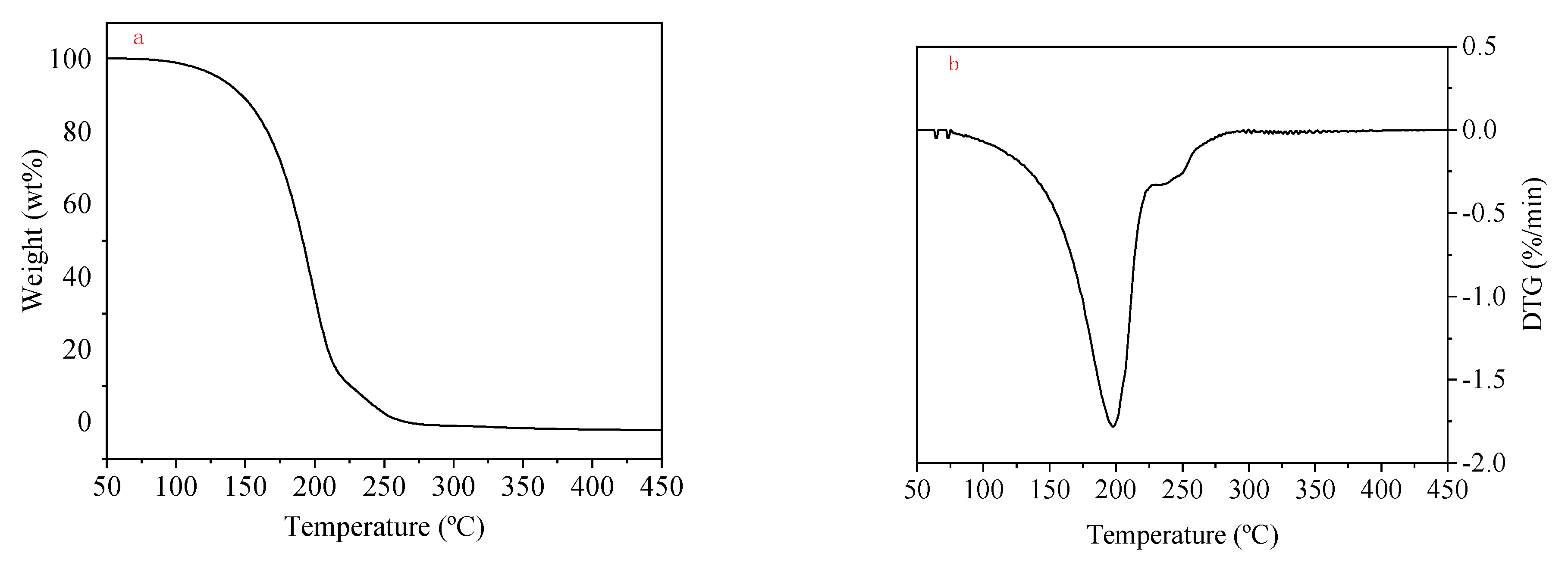

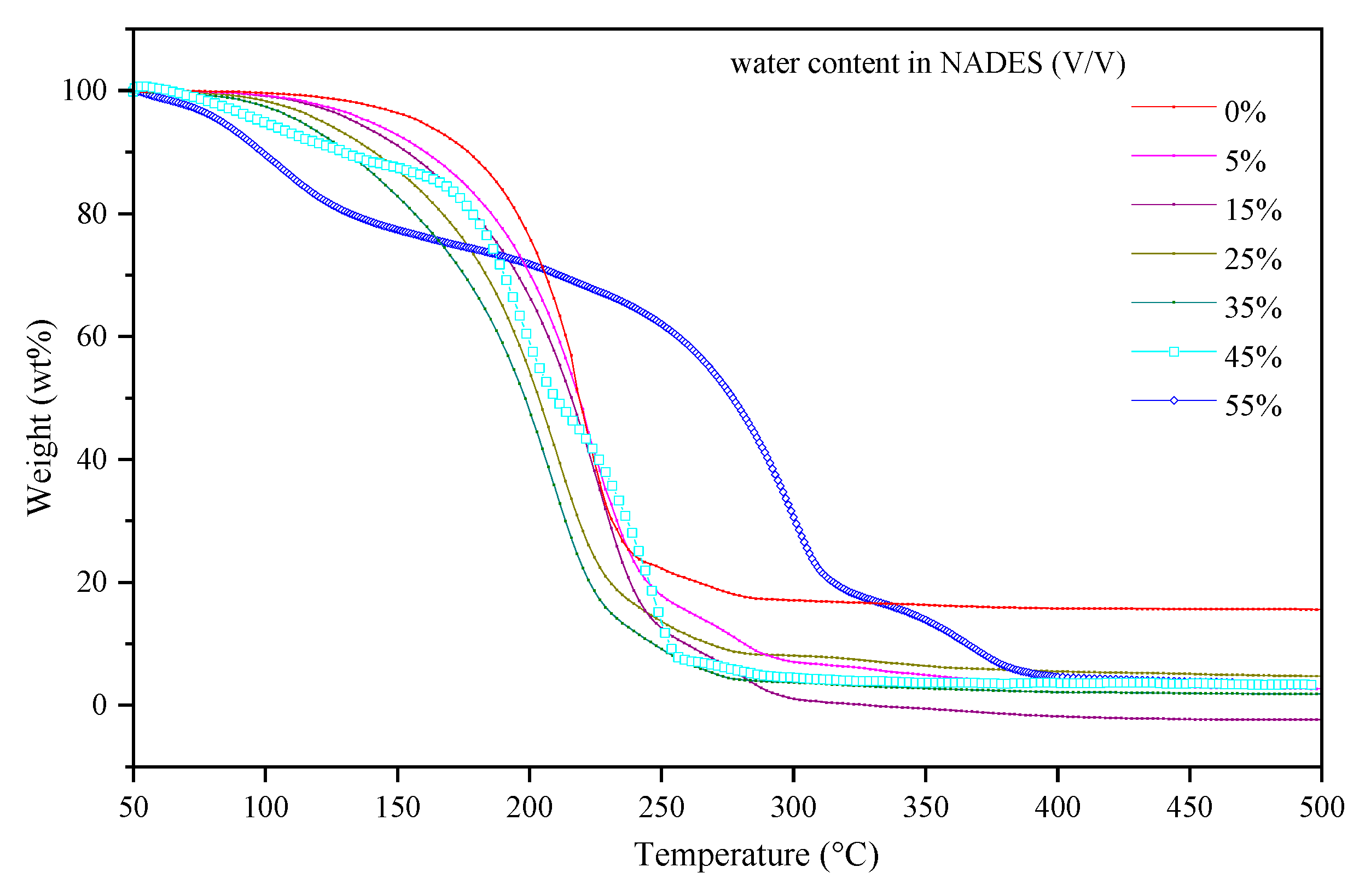
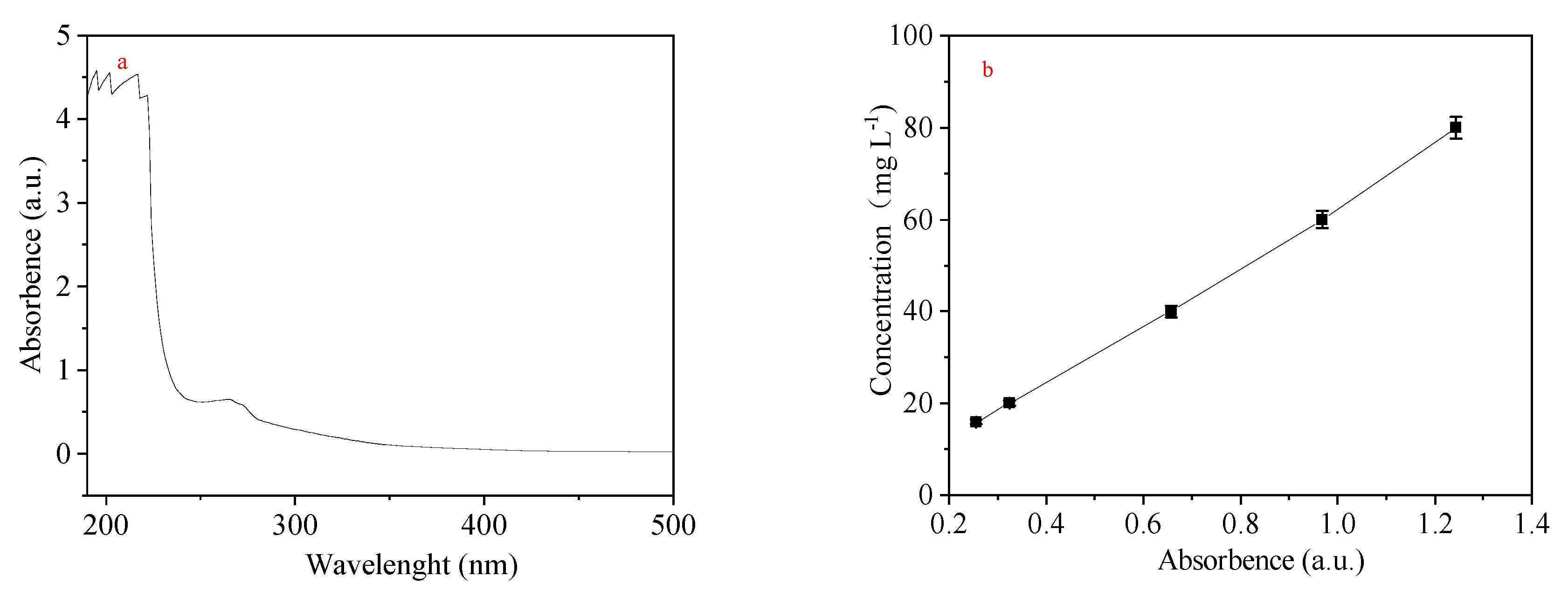

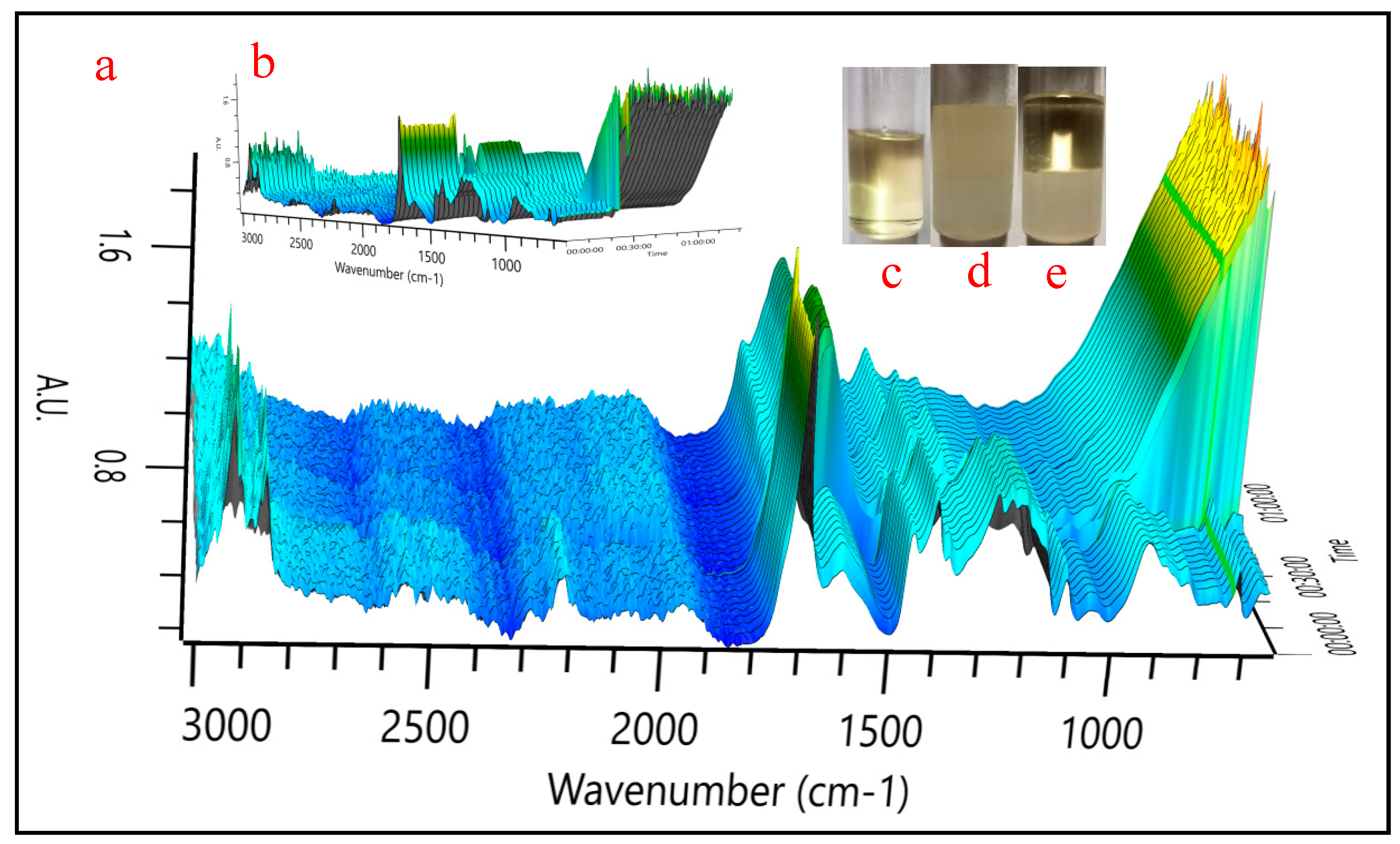
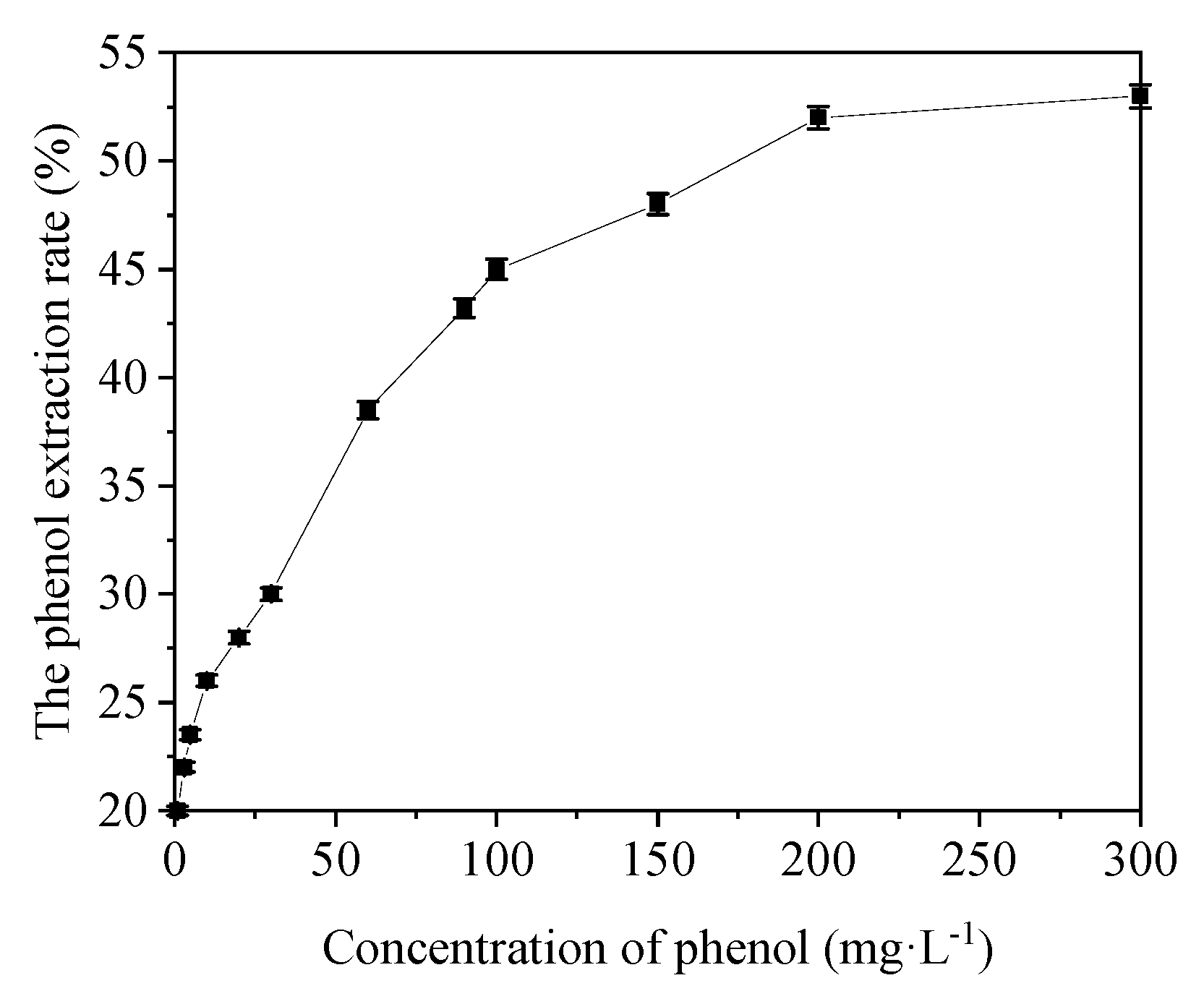
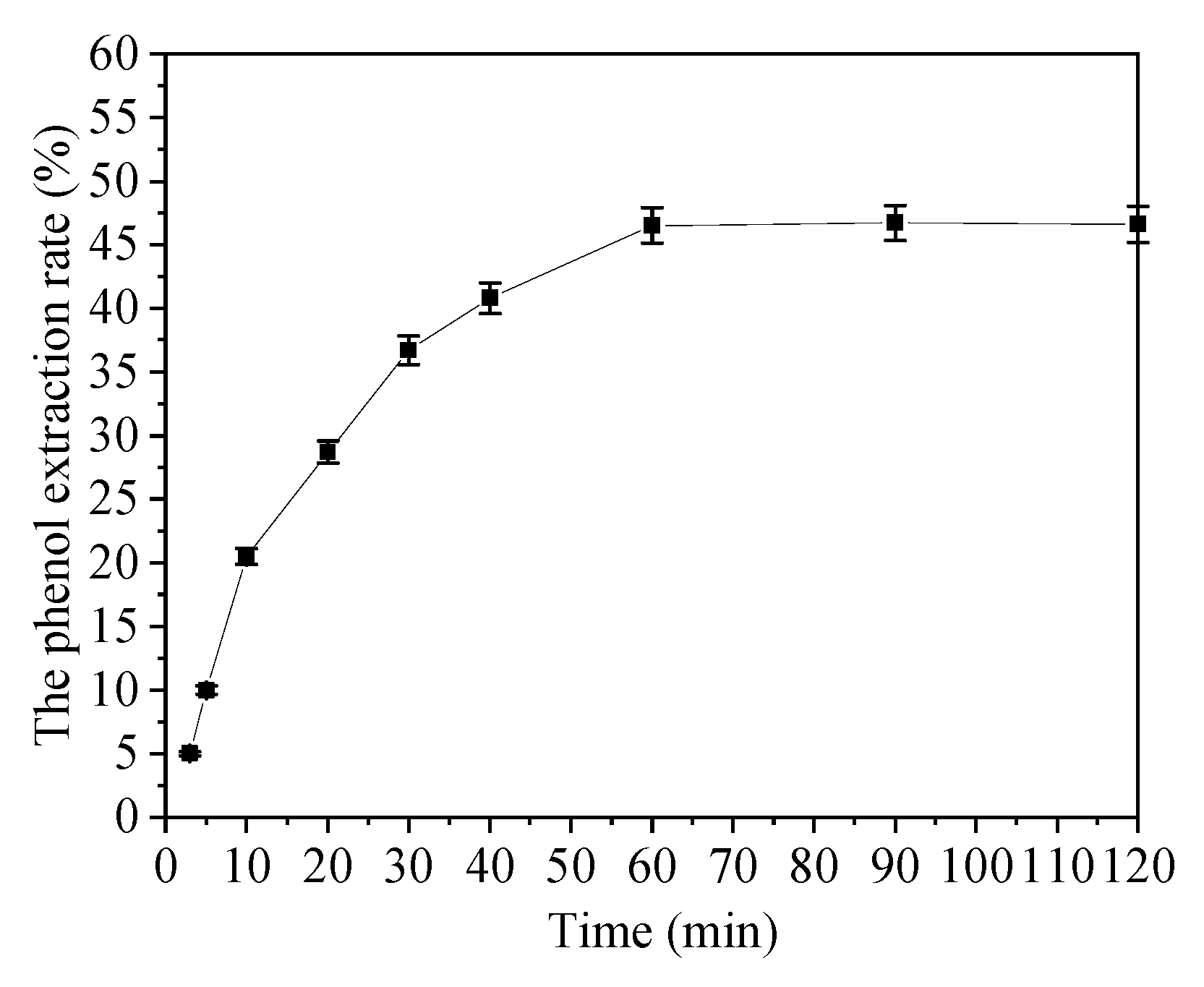

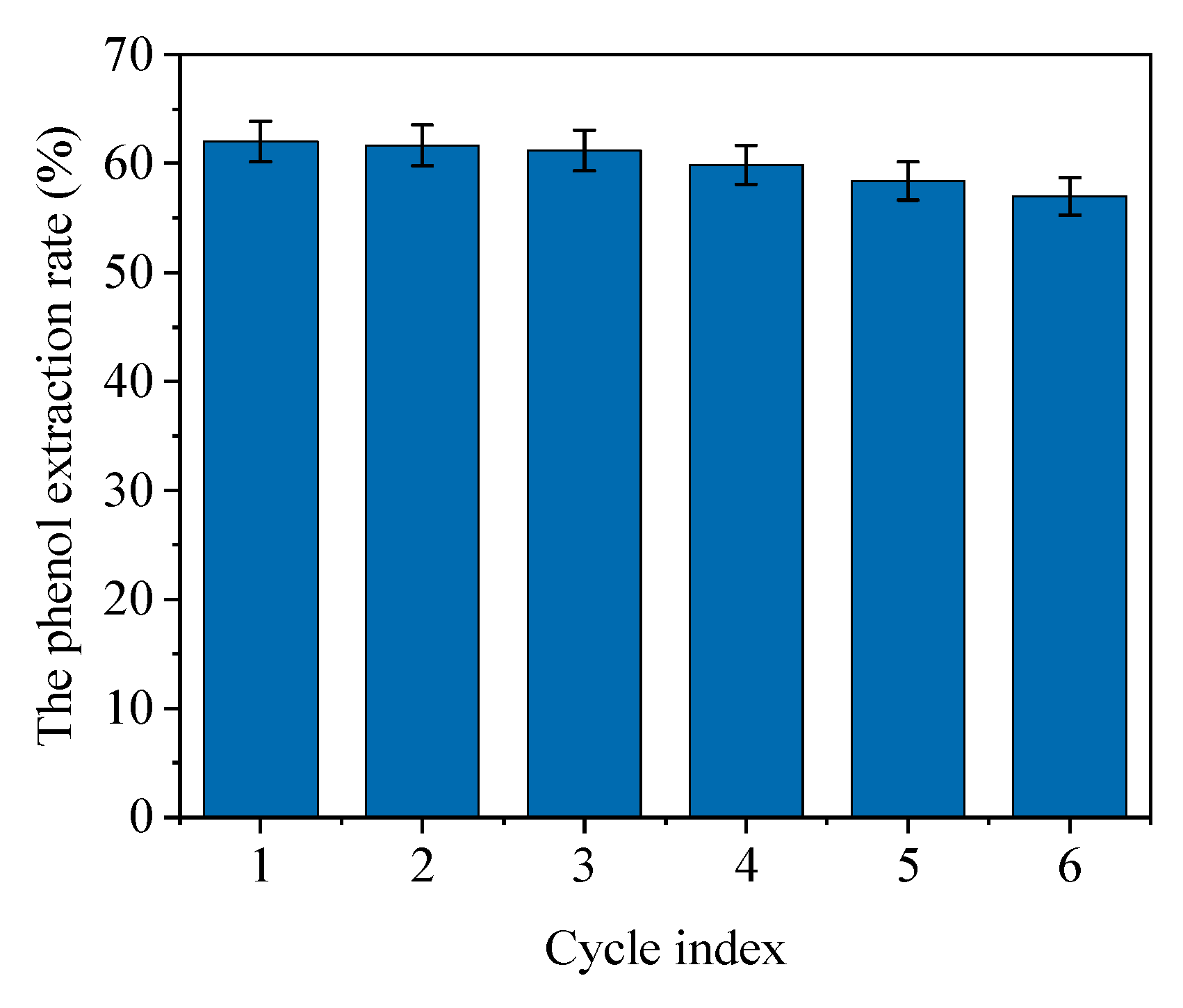
| Sample Number | Ratio of Decanoic Acid and L-Proline | pH | Acid/Base Properties |
|---|---|---|---|
| 1 | 4.2:1 | 5.67 | acidity |
| 2 | 4.55:1 | 5.42 | acidity |
| 3 | 3.5:1 | 5.58 | acidity |
| 4 | 4.84:1 | 5.24 | acidity |
| 5 | 2.88:1 | 5.86 | acidity |
Publisher’s Note: MDPI stays neutral with regard to jurisdictional claims in published maps and institutional affiliations. |
© 2021 by the authors. Licensee MDPI, Basel, Switzerland. This article is an open access article distributed under the terms and conditions of the Creative Commons Attribution (CC BY) license (https://creativecommons.org/licenses/by/4.0/).
Share and Cite
Li, M.; Liu, Y.; Hu, F.; Ren, H.; Duan, E. Amino Acid-Based Natural Deep Eutectic Solvents for Extraction of Phenolic Compounds from Aqueous Environments. Processes 2021, 9, 1716. https://doi.org/10.3390/pr9101716
Li M, Liu Y, Hu F, Ren H, Duan E. Amino Acid-Based Natural Deep Eutectic Solvents for Extraction of Phenolic Compounds from Aqueous Environments. Processes. 2021; 9(10):1716. https://doi.org/10.3390/pr9101716
Chicago/Turabian StyleLi, Meiyu, Yize Liu, Fanjie Hu, Hongwei Ren, and Erhong Duan. 2021. "Amino Acid-Based Natural Deep Eutectic Solvents for Extraction of Phenolic Compounds from Aqueous Environments" Processes 9, no. 10: 1716. https://doi.org/10.3390/pr9101716





